On Friday night Seth Ausubel, my frequent birding buddy, and I discussed our birding options for Saturday morning. A pretty major front was supposed to make its way over New York City in the wee hours so we decided to play it by ear and call each other early in the morning and figure out if the weather would be decent enough to go out at all and, if so, where we would go. A little after 6 AM we had both checked the weather radar and decided that the rain had stopped and that I would pick him up at 6:30 and we would go birding somewhere on the coast. Once Seth was in the car we had to decide where, exactly, to go. The winds, strong out of the southeast, looked great for a seawatch so we decided to head to one of New York’s best seawatching spots, Robert Moses State Park, on the south shore of Long Island in Suffolk County. It would prove to be a fateful decision.
A brief stop en route at Jones Beach State Park didn’t net us anything spectacular, though the swale was crowded with a variety of shorebirds and we did see a Horned Lark fledgling being fed by an adult. Our stop there was brief because we both wanted to see seabirds, and lots of them!
The drive from Jones Beach to Robert Moses was drizzly, and as we drove Seth checked the weather radar on his phone to find out what was happening. It quickly became apparent that the rain we were driving through was the storm’s last gasp, a thin tendril of rain lagging behind the rest of the storm and that it would soon end. Sure enough, by the time we reached Field 2 of Robert Moses State Park the rain had stopped and we were pleased to see Bobby Kurtz and Pat Lindsay already on station behind spotting scopes, scanning the sea. They said that there had been hundreds of Sooty Shearwaters already, as well as several Great Shearwaters though lately the latter had been replaced by Cory’s Shearwaters. Sure enough, when we put eyes to scopes the sooties were streaming past at a couple per minute and the Cory’s Shearwaters and Wilson’s Storm-Petrels were pretty regular as well.
The birds were closer to shore than I had anticipated so I jogged back to my car to get my camera so I could attempt to digiscope some of the birds going past. While I was gone I missed a Great Shearwater, kind of a bummer but I was sure more would come past. In the meantime, sooties!
Eventually, we were joined by Gail Benson and Tom Burke, and enjoyed more of them same birds and a Black Tern, in addition to several Parasitic Jaegers making their way past our scope array. The worst Parasitic Jaeger picture ever is below for your viewing displeasure.
As time went by we kept our eyes on the sea and soon a small shearwater with a sharp contrasting pattern came into view. Manx Shearwater! Finally, my lifer! Instead of losing the small bird from view while I tried to attach my camera to the scope I just watched the bird as it flew past, ecstatic at checking a new bird off of my checklist.
Shai Mitra soon joined us and all eyes stayed glued to scopes, hoping for the next great bird. We had been cracking jokes about how we had been saying we would get jaegers and a Manx Shearwater so the next bird on our list would be an albatross because we had also said we would get one of those. Instead we had a pair of jaegers go past one of which was smaller, gray on the back, and had long tail streamers. Long-tailed Jaeger!
Next up were a pair of Roseate Terns that Bobby picked up heading east, the only really notable birds that we had going that direction. The winds started to shift around to a more southwest direction and we could feel the temperature increase. But the birds continued to stream past, with more sooties and the occasional Wilson’s Storm-Petrel or Cory’s Shearwater still heading west.
Then it happened. Seth called a Great Shearwater while Tom and Shai were trying to get folks on a Cory’s Shearwater. It soon became apparent that all three were referencing the same bird which shouldn’t be because the two species are rather different from each other. I was trying to agree with Seth because I had missed the only Great Shearwater to fly past while we were there and while the dark cap on the bird made me think Great Shearwater the wide wings certainly seemed to indicate Cory’s Shearwater though, to me, the bird didn’t fly with the same lumbering effort that Cory’s Shearwaters usually do. I don’t remember who the first person was that said the words “Cape Verde Shearwater” but those words were uttered. Now Cape Verde Shearwater was described as a species in the 1890’s and later lumped in with Cory’s Shearwater. Now split again, it is an exceedingly rare bird in the North America, with less than a handful of accepted records in the ABA area. Had I been seawatching alone I never would have had the skill nor the guts to try to call that bird (indeed, it likely never would have crossed my mind) but here I was with some of New York’s finest birders and they were getting excited about the possibility!
horrifically bad digiscoped images of a possible (probable?) Cape Verde Shearwater both above and below
If only I had managed to get better shots but I managed to mess up the focus, to say nothing of the motion blur. In my defense, the bird was over 200 yards away and it was tough to track at all through a digiscoping rig.
In an email to the New York State birding listserv Shai Mitra described the bird as follows:
one apparent Cape Verde Shearwater (strongly resembling Cory’s in structure and overall plumage: languid flapping style, wings broader than in Great, wrists held forward during glides, gray-brown nape and upper back, and vaguely defined U-shaped white line on rump; BUT distinctly dark-capped, bill slim and only vaguely pale-based)
Though both Tom Burke and Shai Mitra are on the New York State Avian Records Committee it seems a longshot that the bird will be accepted for the New York State Checklist. (First state records are held to an extremely high standard.). Nonetheless, it was a pretty darn cool experience and I think I will count it on my ABA list. What would you do?
Regardless of the countability of the bird, any morning’s birding for me that includes a definite lifer, a potential lifer, a second sighting of a bird that I hadn’t seen since 2007, and hundreds of shearwaters is a pretty awesome morning. I’m glad I decided to really start putting some effort into seawatching!
…










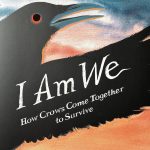
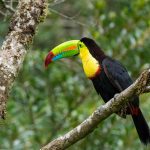

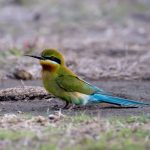
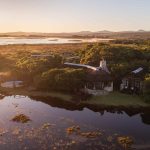
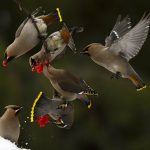
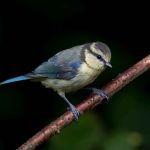
How does this post not have any comments yet? Cape Verde Shearwater. Wow, nuts.
I see you’ve added this bird to your year list. Can I add the Tomtit that was actually probably a North Island Robin but that isn’t as interesting so I’d rather think it was a Tomtit to my year list? 😛
Congratulations!! That is an amazing record and excellent birding day!
@Nate: I know, right?
@Duncan: I have a very low standard for my year list. I have also put it on my life and ABA lists, provisionally. We’ll see if it stays on them or if I have a change of heart.
@Renato: Thanks! It really was – though, actually, it was an excellent two hours’ birding!
Dude, I’m teasing. I actually prefer people not to worry unduly about their listing. You should decide what counts on your list, not some committee.
Yeah, I actually meant to make a sarcastic comment and add a smiley but my brain is a bit fried after a long day. And you should totally add Tomtit to your list because it is so fun to say. Tomtit. Tomtit. TOMTIT!!!
@Corey: I am shocked – hear me? – shocked about you adding such a dubious observation. This is not how birders operate. You get a penalty of 100 species taken off your year list, putting you to 201. Furthermore, every species you see from now on will only count as 0.5 species, so you have to see 2 to add 1.
Justice for all!
🙂
Wow, what a day! If was sure enough that the bird was a Cape Verde Shearwater, I would put it on all of my respective lists.
Man, what has become of our year list competition?
Clare M counting dead birds she find on a beach, Corey counting flying plastic bags as Cape Verde Shearwaters,… Birding is doomed.
It’s still amazing to watch your life journey from Saugerties to Sagtikos. How else are things for you on LawnGuy Land?
@Jochen: Is birding doomed or just your chances of seeing the most birds of us? Of course, Redgannet is sneakily adding bird after bird and will likely lap us all, even with his self-imposed counting restrictions.
@Pat: I am pretty darn sure of it but still…
@Garrett: The furthest east I will ever live will be Queens, which, yeah, is technically on Long Island. All is good! How’s things in the land of Garrison Keiler and Michele Bachmann?
Michele who? Of warbler fame?
Considering moving next door to Wisconsin now to get a piece of that sweet teacher merit pay that will be coming down the pike. I’d “betcha” I’d be really good at cheating on those NCLB state tests on behalf of a classroom full of 35 kids in “America’s Dairyland”. WIn-WIn.
Had you seen this? http://birdingonthe.net/mailinglists/FRID.html#1339270017
Apparently, according to Steve Howell, 1st summer Cory’s can look dark capped compared to older birds due to the contrast between the fresher head feathers and faded hindneck and mantle feathers.